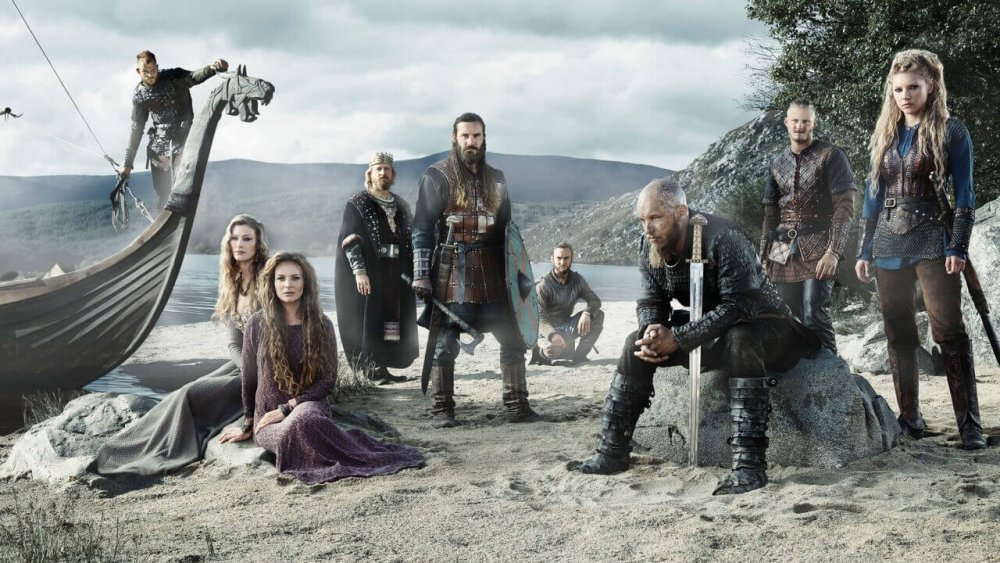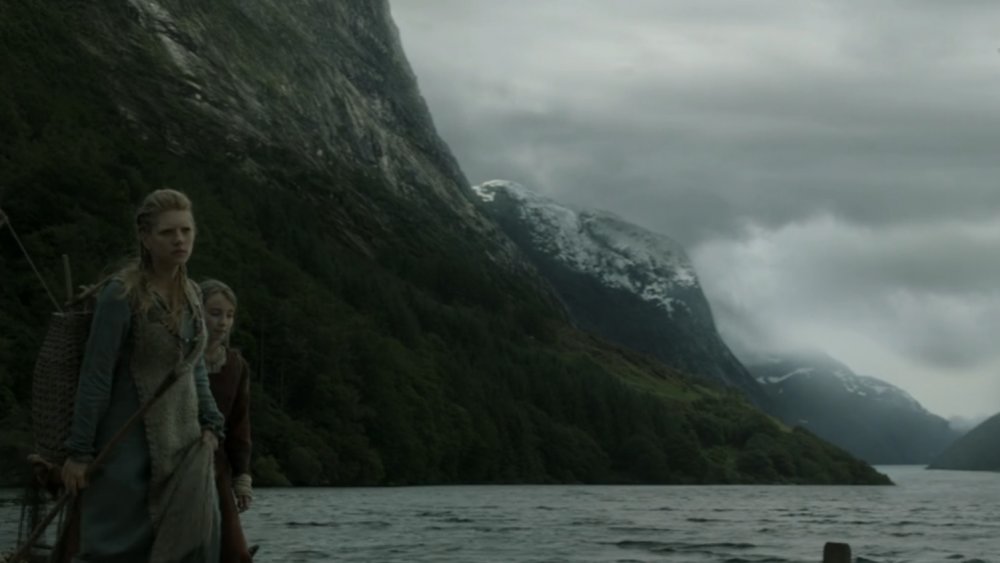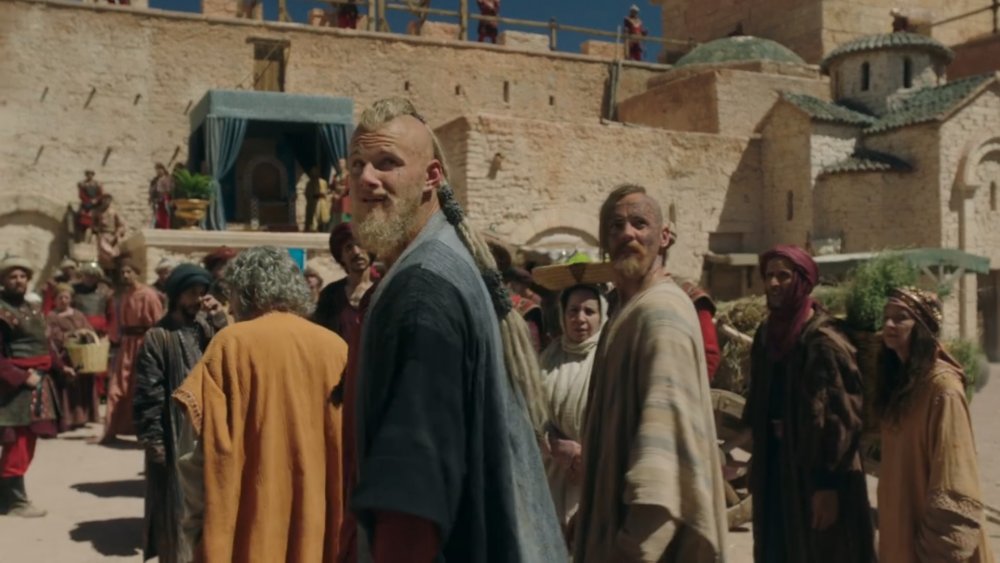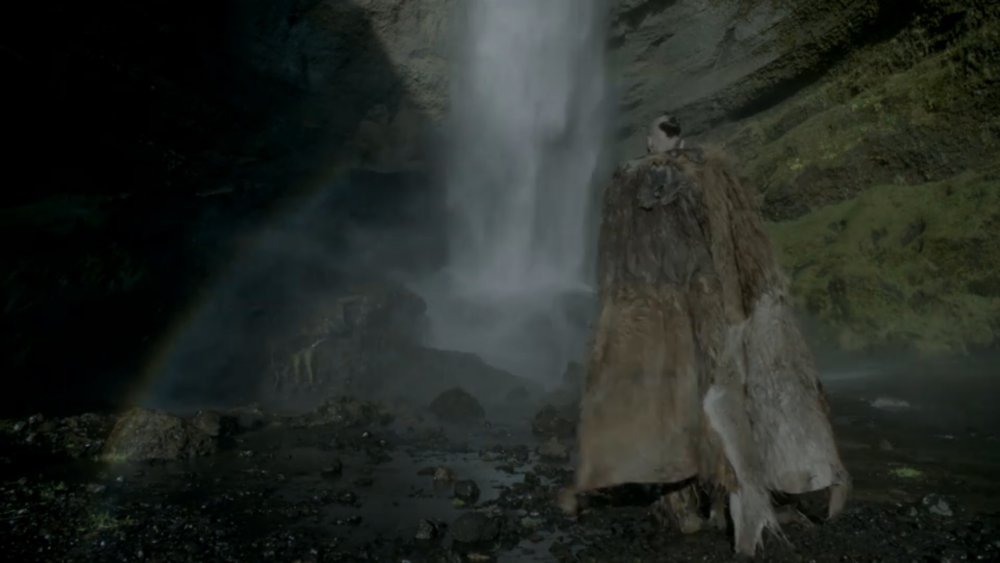Where Is Vikings Filmed?
There's a lot to love about History's landmark drama series Vikings. The show provides a deeply human look at an often misunderstood period of time and the people that lived in it. Although it takes some historical liberties in service of telling a compelling story, it's able to give viewers a look at the Vikings and the world in which they lived that few programs before have attempted.
One aspect of Viking history that is often overlooked is how well-traveled they were. While we tend to imagine them confined to the fjords and seas of northern Europe, in reality, they traveled to areas as far-flung as the Mediterranean Sea and the eastern coast of Canada (via Smithsonian). These historic travels provide the show ample opportunities to stun viewers with shots of exotic locales of the Middle Ages. Thankfully, the production has been more than up to the task.
Whether they were recreating Norwegian settlements or desert caravans, the producers took viewers to some spectacular filming locations over the show's six seasons. Here are some of the locations used to create the world of Vikings.
Ireland stands in for many of Vikings' locations
In the early seasons of Vikings, much of the action was centered in Norse villages in Norway and in England, where Ragnar (Travis Fimmel) and company were conducting raids. Although there were some establishing shots filmed in Scandanavia, most of the series was shot in Ireland.
Irish tax credits for filming were likely a large draw for the production. It's also convenient that the lush, craggy landscapes of the Emerald Isle are able to believably pass for Scandinavia. According to Atlas of Wonders, much of the filming was conducted in County Wicklow, which is just south of Dublin. The Viking village of Kattegat, home to much of the early action in the series, was created on the shore of a lake called Lough Tay. Despite appearing to be at the end of a mighty fjord, the lake is actually quite small.
Vikings also makes use of Ashford Studios, also in County Wicklow. Sets for larger cityscapes seen on the show are often constructed in and around the studio's lot. Production makes strategic use of digital effects to enhance the city sets to capture the ancient grandiosity that we see on the series. They also add snow-capped mountains into the background of outdoor shoots to give it that extra sprinkle of Nordic charm.
Vikings filmed multiple episodes in Morocco
Later seasons of Vikings see the titular explorers branch away from Norway and England into further-flung regions of the world. Although Ireland is a stunning place, it can't stand in for everywhere. So, when longboats started traveling to the Mediterranean, production had to secure some new filming locations.
Like Ireland before it, Morocco became a regular filming location for the series. In season 5, Bjorn (Alexander Ludwig) travels across the Mediterranean world, eventually ending up in northern Africa as part of an attempt to secure alliances with Arab rulers and traders. His journey begins in Sicily, which was then an Arab Muslim emirate. From there, he travels across the Sahara desert in a caravan, enduring extreme heat and sandstorms before setting sail back to Norway.
These jaw-dropping sequences were all filmed in Morocco. The production even used sets that had previously been used for movies like The Mummy, Gladiator, and Kingdom of Heaven (via filmfantravel.com).
Production didn't fake it when they depicted a journey to Iceland
The Mediterranean Sea and Sahara Desert weren't the only picturesque travel destinations that Vikings visited in its fifth season. While Bjorn heads south to build alliances, Floki (Gustaf Skarsgård) goes north on a journey of his own. After sailing for some time, he arrives at a beautiful and uninhabited land that he believes to be Asgard, or the place of the Gods in Norse mythology. In reality, he has discovered an earthly place that will go on to become very important to the Norse culture.
The character of Floki is loosely based on the historic figure Hrafna-Flóki Vilgerðarson, who is the first known Viking to intentionally sail to Iceland. While the journey of Floki on Vikings is quite different than the one described in the medieval Icelandic history text Landnámabók, it is still an awe-inspiring storyline (via Mythologian.net). Much of that is thanks to the fact that the show filmed on location in Iceland itself, and made good use of the island's otherworldly beauty.
Production filmed Floki's arrival on black sand beaches located in the southern region of the island. They also made use of several popular waterfalls for filming, including Skógafoss and Dettifoss (via Atlas of Wonders).
We hope the upcoming spinoff series, Vikings: Valhalla, takes a note from its predecessor's playbook and continues to take viewers to majestic locales.



